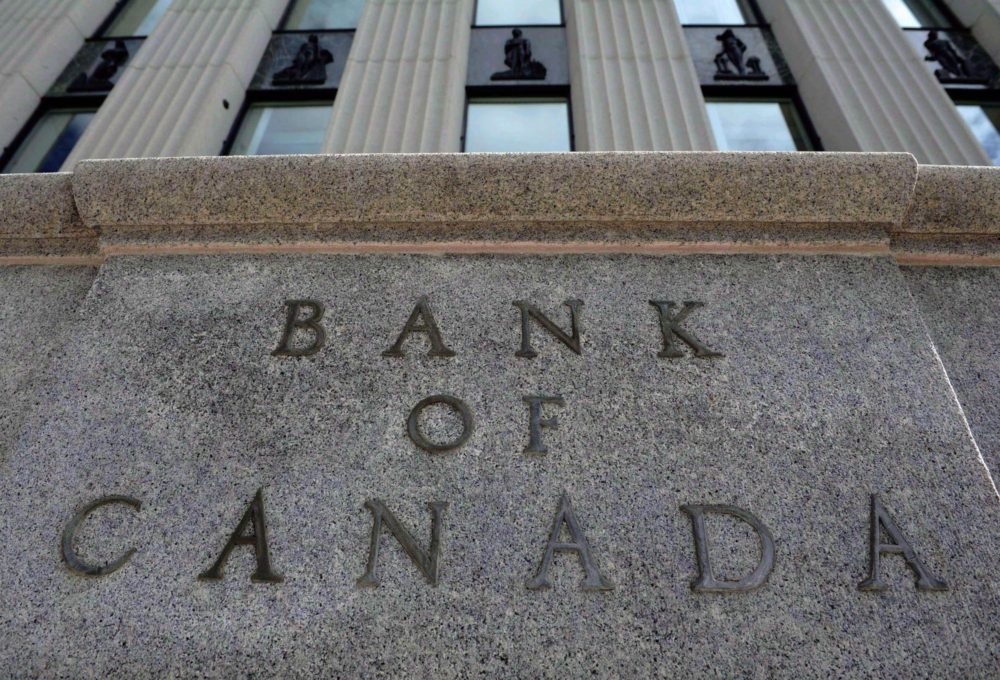OTTAWA — The Bank of Canada is leaving its key interest rate unchanged in the wake of an abrupt economic deceleration that it says is injecting more uncertainty about the timing of future rate hikes.
The central bank also told Canadians on Wednesday that they should to expect a bleaker economic performance in the months ahead.
The bank now believes the weakness will last through the first half of 2019, which is longer than the temporary slump governor Stephen Poloz had predicted earlier in the winter.
The bank’s trend-setting interest rate stayed at 1.75 per cent for a third-straight policy announcement. Before this quieter stretch, Poloz had responded to the country’s stronger economic performance with five rate hikes between mid-2017 and last fall — and he appeared ready for more.
Last week, however, Canada received a dose of surprisingly disappointing data.
A Statistics Canada report showed the economy produced unexpectedly feeble numbers over the final three months of 2018, giving the country its weakest quarter of economic growth in two and a half years. Growth, as measured by real gross domestic product, in the fourth quarter slowed to an annualized pace of just 0.4 per cent.
“Given the mixed picture that the data present, it will take time to gauge the persistence of below-potential growth and the implications for the inflation outlook,” the central bank said Wednesday in a statement, which explained some of the factors behind the decision.
“With increased uncertainty about the timing of future rate increases, governing council will be watching closely developments in household spending, oil markets, and global trade policy.”
Notably, the bank’s statement dropped language present in its January release that said governing council expected the rate would need to rise over time to an estimated destination range of between 2.5 and 3.5 per cent.
Heading into Wednesday’s decision, the Bank of Canada was widely expected to leave the key interest rate untouched.
Many analysts have predicted the bank will wait until at least late 2019 before introducing another rate hike. There have also been doubts whether Poloz will raise the rate again this year — or whether his next move will even be a hike.
“The Bank of Canada has sent a clear message that it views the 2019 outlook to be less rosy than it did even a month ago,” said Frances Donald, head of macroeconomic strategy with Manulife Asset Management.
“My guess is that the fourth-quarter GDP rocked the Bank of Canada’s boat.”
Donald said it’s important to factor in the global context because several central banks, including the United States Federal Reserve, have also undergone a so-called dovish shift in the past month or two.
“It’s going to be difficult for the remaining ‘hawkish’ central banks, like the Bank of Canada, to maintain such an optimistic outlook,” she said.
Scotiabank’s Derek Holt wrote in a report Wednesday that Poloz was providing guidance as recently as Feb. 21 that the rate would still need to increase over time to the so-called neutral range 2.5 to 3.5 per cent.
“If the (Bank of Canada) hikes this year, then the best-case scenario is toward year-end if all goes smashingly well with respect to rebound expectations,” Holt said.
The Bank of Canada said it had been expecting a drop in household spending as well as weak numbers for exports and investment in oil-producing provinces in the fourth quarter.
But it acknowledged the slowdown ended up being “sharper and more broadly based.”
The central bank had been warning Canadians to expect a soft patch in late 2018 and early 2019 primarily due to the steep drop in oil prices late last year.
Poloz noted in January that “as the snow melts, we’ll have a clearer view that the economy is back on track and then likely to grow above or around two per cent after that.”
A fresh economic start by spring no longer appears to be in the forecast.
“Consumer spending and the housing market were soft, despite strong growth in employment and labour income,” the bank said Wednesday.
“Both exports and business investment also fell short of expectations.”
The central bank’s next policy decision is scheduled for April 24 when it will also update its economic projections.
Statistics Canada said the late-2018 slowdown was mostly due to a 2.7 per cent contraction, on a quarter-over-quarter basis, in investment spending. Overall exports saw a slight decline and household spending slowed for a second straight quarter.
On Wednesday, the agency released a fresh batch of gloomy numbers that said Canada’s merchandise trade deficit grew to a record $4.6 billion in December.
The central bank also said the global economy’s deceleration has been more pronounced than expected — and more widespread.
The moderation, it added, has been caused in large part by concerns related to trade tensions and uncertainty. The bank, however, noted that global economic prospects would improve if ongoing trade conflicts are resolved.
— Follow @AndyBlatchford on Twitter
Andy Blatchford, The Canadian Press

 Buying a Home5 years ago
Buying a Home5 years ago
 Credit6 years ago
Credit6 years ago
 5 Mortgage Secrets6 years ago
5 Mortgage Secrets6 years ago
 Business4 years ago
Business4 years ago
 Buying a Home6 years ago
Buying a Home6 years ago
 5 Mortgage Secrets6 years ago
5 Mortgage Secrets6 years ago
 Business4 years ago
Business4 years ago
 Buying a Home6 years ago
Buying a Home6 years ago






